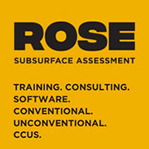Europe / Caspian / CIS
Country profile: Norway
| Location: | Northern Europe, bordering the North Sea and the North Atlantic Ocean, west of Sweden |
| Climate: | temperate along coast, modified by North Atlantic Current; colder interior with increased precipitation and colder summers; rainy year-round on west coast |
| Terrain: | glaciated; mostly high plateaus and rugged mountains broken by fertile valleys; small, scattered plains; coastline deeply indented by fjords; arctic tundra in north |
| Size: | 323802 sq. km total (Land area: 307442 sq. km Water area: 16360 sq.km) |
| Population: | 4,644,457 (July 2008 est.) |
| Languages: | Bokmal Norwegian (official), Nynorsk Norwegian (official), small Sami- and Finnish-speaking minorities; note - Sami is official in six municipalities |
| Government: | constitutional monarchy |
| Capital city: | Oslo |
| Legal system: | mixture of customary law, civil law system, and common law traditions; Supreme Court renders advisory opinions to legislature when asked; accepts compulsory ICJ jurisdiction with reservations |
| Currency: | Norwegian krone (NOK) |
| Licensing: |
Country profile
Norway is an advanced, highly-developed economy that has greatly benefited from the utilization of its hydrocarbon resources. In 2005, the country had a gross domestic product (GDP) of $295 billion, and a per-capita GDP of $64,000, which is one of the highest in the world. The Norwegian economy grew by 2.5 percent in 2005, and is forecasted to grow by 2.2 percent in 2006. Norway’s economy is highly dependent on its offshore oil and natural gas sector, which provides the government with its largest single source of revenue and the largest contribution to GDP. In recent years, high oil prices have made for government budget and current account surpluses, and rising disposable income.
Norway's dependence upon oil and gas revenues present long-term challenges for the country, especially because many industry analysts believe that North Sea oil and gas production has already reached or passed its peak. In particular, the country faces pension liabilities and other welfare obligations. In response to these challenges, the Norwegian government created the Petroleum Fund in 1990, later renamed the Government Pension Fund in 2005. A portion of annual oil and gas revenues flow into the Fund each year, which serves the dual purpose of buffering the short-term variations in oil revenues and providing a mechanism to transfer current wealth to future generations. The Fund, which holds a combination of cash, bonds, and shares, holds only international assets and stood at some $240 billion in March 2006.
The latest nationwide election in October 2005 had important repercussions for Norway’s future energy policy, because the largest coalition members (Labour and Socialists) disagree on whether or not to pursue exploration activities in the Barents Sea. In March 2006, the government presented its management plan for the Barents Sea. The plan allows new exploration in some areas of the Barents Sea, but it also places a moratorium on other, ecologically-sensitive parts of the region until 2010. In addition, the plan allows existing exploration activities in the Barents Sea to continue. With declining production from existing areas, Norway must explore these frontier regions in order to maintain oil and natural gas production in the long-term.
Energy production and consumption
| Oil | Gas | |
| Production: | 2 million bbl/day (2005 est.) | 83 billion cu m (2005 est.) |
| Consumption: | 228,400 bbl/day (2005 est.) | 5 billion cu m (2005 est.) |
| Exports: | 3 million bbl/day (2005 est.) | 78 billion cu m (2005 est.) |
| Imports: | 91,930 bbl/day (2005 est.) | |
| Reserves: | 7 billion bbl (1 January 2006 est.) | 2 trillion cu m (1 January 2006 est.) |
| Major fields: |
Norway - recent news
| 05 Jan 26 |
Norway: TGS completes new GeoStreamer 3D Seismic Surveys to support exploration in the Vøring Basin TGS, a global leader in energy data and intelligence, announces the completion of the PGS24M02NWS and PGS24M04NWS 3D seismic surveys in the Vøring Basin on the mid-Norwegian continental margin. |
| 03 Jan 26 |
Norway: The Shelf in 2025 will be presented on 8 January The Shelf in 2025 is a summary of activity on the Norwegian continental shelf (NCS) over the past year: Exploration results, annual production figures and investment and production forecasts for the next five years. |
| 23 Dec 25 |
Norway's oil production in November is 4.3 percent more than the NOD’s forecast and 4.6 percent more than the forecast so far this year Preliminary production figures for November 2025 show an average daily production of 2,090,000 barrels of oil, NGL and condensate. Oil production in November is 4.3 percent more than the NOD’s forecast and 4.6 percent more than the forecast so far this year. |
| 22 Dec 25 |
Norway: Equinor provides status update for the Snøhvit Future project Estimates for progress and costs for the Snøhvit Future project have been updated. The project has been postponed compared to the original plan and cost estimates have increased by approx. NOK four billion since 2024. The Snøhvit Future project strengthens Norway's position as a reliable and long-term supplier of gas produced with very low greenhouse gas emissions. |
| 18 Dec 25 |
Norway: Subsea7 awarded contract offshore Norway Subsea7 has announced the award of a large contract by ConocoPhillips Skandinavia for the Previously Produced Fields (PPF) development, offshore Norway. |
Norway - more news
Other countries in this region
- Afghanistan,
- Albania,
- Armenia,
- Austria,
- Azerbaijan,
- Belarus,
- Belgium,
- Bosnia and Herzegovina,
- Bulgaria,
- Croatia,
- Cyprus,
- Czech Republic,
- Denmark,
- Estonia,
- Faroe Islands,
- Finland,
- France,
- Georgia,
- Germany,
- Greece,
- Greenland,
- Hungary,
- Iceland,
- Ireland,
- Italy,
- Kazakhstan,
- Kyrgyzstan,
- Latvia,
- Lithuania,
- Luxembourg,
- Malta,
- Moldova,
- Montenegro,
- Netherlands,
- Poland,
- Portugal,
- Romania,
- Russia,
- Serbia,
- Slovakia,
- Slovenia,
- Spain,
- Sweden,
- Switzerland,
- Tajikistan,
- Tatarstan,
- Turkey,
- Turkmenistan,
- Ukraine,
- United Kingdom,
- Uzbekistan












